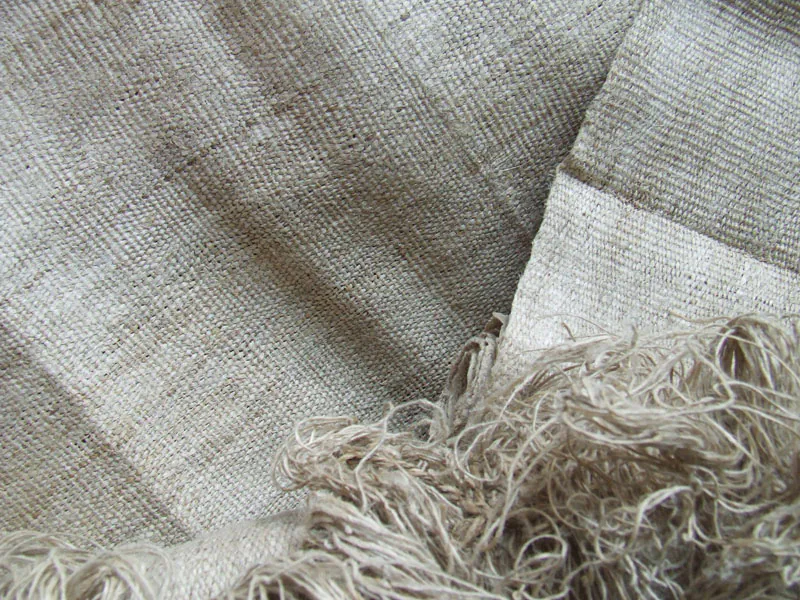
Bananas, pineapples, and coconuts have one important thing in common, apart from being delicious: they are all sustainable materials that are increasingly being used to make textiles.
More and more sustainable textile companies are entering the textile and apparel industry worldwide to combat the harmful environmental effects of textile production. Textile production is one of the most polluting industries in the world, and is one of the leading causes of water pollution from industrial sources, according to the World Bank. Textile factories also contribute to air pollution and solid-waste pollution. The impact of conventional textile production on our planet’s wellbeing is significant: it involves harmful and toxic chemicals, fabric dye, mass amounts of raw materials, and a lot of waste.
Causes of pollution from textile production
A lot of the pollution and waste from the textile and apparel industry is a result of the types of raw materials and large amounts of water used in production. For example, cotton is one of the most common materials used for textile production, but it is not very sustainable. Cotton requires a lot of water: to create one cotton t-shirt and one pair of pants can take up to 5,000 gallons of water, and cotton plants themselves require considerable amounts of water to thrive. Organic cotton is a more environmentally-friendly solution, but it is considerably more expensive to cultivate than regular cotton. Additionally, cotton crops worldwide consume 25% of all pesticides and more than 10% of all agricultural chemicals.
The fabric dye used in textile production is also harmful to the environment and to human health. Some estimates say that approximately half a trillion gallons of fresh water are used in textile dyeing annually. Dye wastewater is often deposited into nearby bodies of water where it contaminates drinking water and pollutes natural habitats.
In addition to these factors, the fact is that a lot of the clothing and textiles produced by this industry are just not reusable, recyclable, or biodegradable. Polyester and nylon, for example, are not biodegradable; while recycled polyester is becoming more popular to combat sustainability issues, the energy and fossil fuels used in its creation and shipment to other countries still contributes to pollution.
Sustainable materials for textiles and clothing
Fruits may seem like an unusual source for sustainable materials in this industry, but their use in clothing and textiles is really nothing new. Many emerging sustainable textile companies are taking their inspiration from traditional clothing and textile manufacturing practices of various countries.
Piñatex, a leather alternative derived from pineapple leaves, was inspired by the baron talong, a traditional formal Filipino shirt made with piña fabric (which itself is hand-loomed from pineapple fibre). Unlike traditional leather, this pineapple leather is entirely vegan. It’s also biodegradable, so it won’t sit in a landfill for decades or contribute to pollution. It’s also comparably inexpensive— Piñatex costs about USD 24 per square metre, while traditional leather costs anywhere between USD 27 and USD 40 per square metre. It can be produced in a range of thicknesses, textures, and colours. This new textile not only helps to combat the issue of pollution and waste in the textile industry; it also finds a use for the 40,000 tonnes of waste pineapple leaves that the global pineapple industry produces every year, and provides more financial opportunities for pineapple farmers.
Textiles made from banana fibres are gaining traction as well. Banana fibre fabric comes from the stalk of the banana plant and has been used in some Southeast Asian countries since the 13th century. This fabric is most commonly used as an alternative to silk. However, since the quality of the fibres within the stalk can vary, alternatives to linen and hemp can also be produced. Around a billion tonnes of banana stems are wasted every year, but with the increasing use of banana fibre fabric, this is likely to change. Banana plants grown in tropical regions often do not require the use of pesticides, and using banana stems for fabric does not require additional cultivate acreage, water, or fertilizer, making them a much more eco-friendly choice than traditional textiles.
While textiles made from banana fibre fabric and pineapple leather are largely used for everyday clothing and accessories, cocona fibres and fabrics—made with activated carbon from coconut husks—are finding their niche in the sportswear and activewear segment. Cocona fabric is fast-drying durable, wrinkle-resistant, and can be made in a variety of thicknesses and weights. It’s an extremely versatile and flexible fabric, making it ideal for exercise and sports.
As the textile and apparel industry continues to move towards plant-based alternatives to traditional fabrics, the environment will benefit. Taking advantage of natural resources that would otherwise be burned, thrown away, or wasted is the industry’s best option to become sustainable and eco-friendly.
Due to the growing competition in both global and domestic markets, businesses are using networking websites like BizVibe’s textile industry section to find quality business partners. So whether you are looking for importers, exporters, or manufactures there is a place for you to start on BizVibe.



